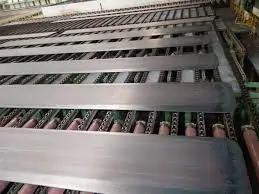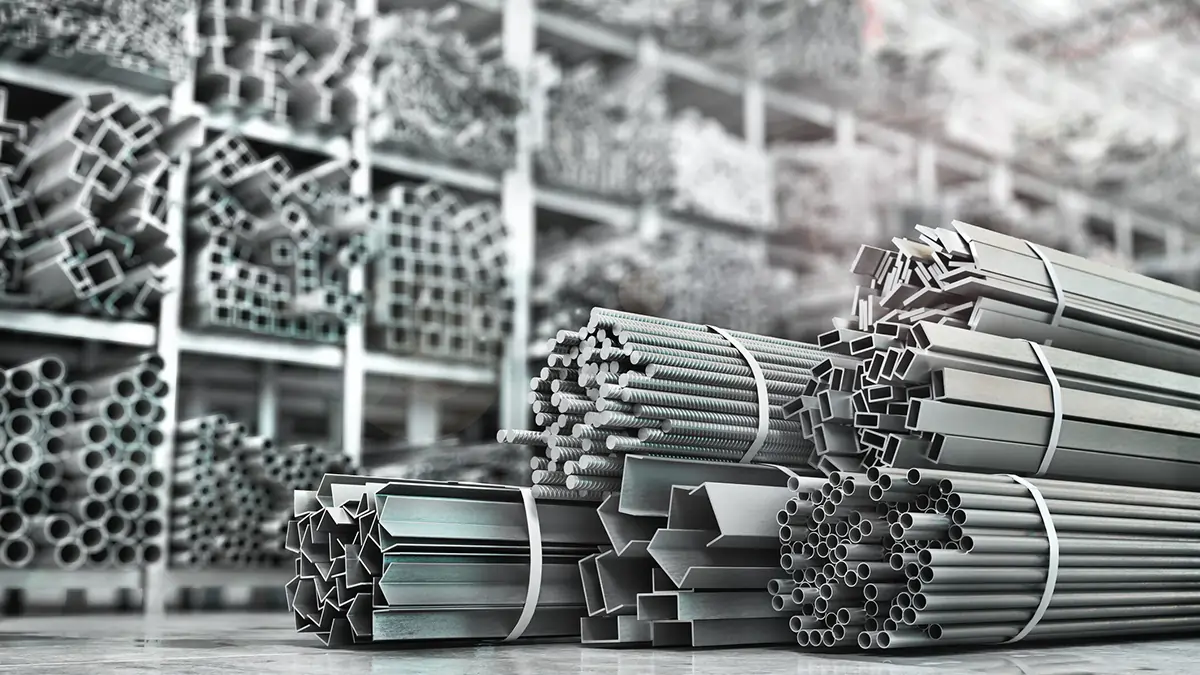Definition of Yield Strength of Steel
The yield strength of steel is defined as the maximum force that a steel product can resist before undergoing permanent deformation. Generally, when a force is applied to steel, it undergoes a deformation phase akin to a spring and may return to its original form once the force is removed. However, beyond a certain point, the steel product undergoes permanent deformation and cannot be reverted to its original dimensions. Here, the manufacturer will note another parameter called yield steel strength.
Steel’s yield strength is usually around 220 MPa, and its maximum is 1570 MPa. The yield strength of stainless steel products varies between 250 MPa and 1000 MPa. Steel usually attains higher yield strength values than other materials because it depends on the density of its crystalline structure. For example, aluminium alloys with lower crystalline structure density have a corresponding yield strength that ranges between 24 MPa and 480 MPa.
Roles of Yield Strength of Steel in Evaluating Technique
By determining the yield strength of steel, engineers can assess whether a material is capable of withstanding loads and pressures under working conditions. The yield strength value must exceed the anticipated applied forces.
Furthermore, steel’s yield strength aids manufacturers in designing products with optimal weight. Steel with higher yield strength often possesses a denser crystalline structure. Using a material with excessively high yield strength compared to requirements can result in products that are heavier and more expensive than necessary.
Differences Between Yield Strength and Tensile Strength in Steel
If yield strength implies the force applied to an object before it undergoes permanent deformation, then the tensile strength in steel represents the maximum resistance of material before it completely fractures. In stress-strain diagrams, the yield strength is located where the stress-strain curve begins to flatten out, while ultimate tensile strength is identified as the highest point on the stress-strain curve before this curve starts to decline.
These two indices not only differ in showing steel strength but also serve distinct purposes in engineering applications. Steel yield strength is often used to ensure the safety and durability of products under normal working conditions. Conversely, tensile strength assesses the material’s maximum load-bearing capacity and resistance, which is particularly crucial when designing products for applications requiring high durability.
Analysis of Technical Specifications About Yield Strength in Steel
Yield strength is normally determined in mechanical experiments by measuring the force and deformation of steel as it is loaded. In other words, during the testing procedure, a steel sample is placed in a tensile testing machine and subjected to a gradually increasing tensile force until it begins to deform permanently.
One of the important parameters correlated with yield strength in stress-strain diagrams is the yield point, which is usually found on the stress-strain curve. As the pressure increases, the steel material undergoes an elastic deformation stage. However, as the applied force increases to the yield point, the curve starts to flatten out, and the material does not return to its original form when the load decreases.
Therefore, yield strength is contrasted by the elastic limit, a value on the stress-strain curve where steel can withstand a certain force without inducing permanent deformation. If the force reaches the elastic limit, the steel material will return to its original shape without permanent deformation. As opposed to yield strength in steel, the elastic limit is a much more flexible parameter that helps engineers determine the material’s recovery capability under load-bearing conditions.
Other Indices to Measure the Strength of Steel
Engineers need to rely on several other important parameters, such as ultimate tensile strength and steel elongation, in addition to yield strength, to assess the strength and mechanical properties of steel materials comprehensively.
Ultimate Tensile Strength of Steel
The ultimate tensile strength of steel is the maximum force that steel can withstand before it completely fractures. This means that before steel completely fractures, it must endure a force greater than the force at which it begins to undergo permanent deformation (yield strength). This value is always larger, typically ranging from 1.2 to 1.5 times the value of the yield strength of steel.
Steel Elongation
Steel elongation measures the ductility of steel under tensile forces, and this index is expressed as the percentage of deformation that a steel sample can withstand before it completely fractures. Yield strength and elongation usually have an inverse relationship, meaning that as yield strength increases, elongation decreases, and vice versa.
Finding a Reputable Steel Manufacturer for Your Project by Midwest Steel
In a nutshell, the yield strength of steel is one of the most important measurements since it reveals how much force the material can resist before suffering plastic deformation. Providing the yield strength defines the actual maximum permissible loading of steel parts or structures; thus, engineers can predict possible failures or malfunctions in service.
Knowing the technical specifications for a project’s steel quality and finding the right manufacturing facility are also essential. Midwest Steel, a specialized provider of steel solutions for importers, streamlines the process of selecting high-quality steel mills that meet all standards and offer transparency in pricing.






One thought on “What is the yield strength of steel and what things that you need to know?”